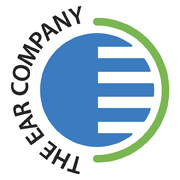
I was at a conference recently where we were discussing what our profession would look like in 2020. As a part of the discussion we were asked what we see as very different now than when we first started. As people began to talk I considered how my profession as well as my world has changed in the last many years. As much as I feel very current in my knowledge due to the education I have added in the recent past I still have a good recollection of what things were like in the early years of my profession. The cutting edge computer based technology that stood floor to ceiling has been replaced by hand held devices, the hearing aids that were adjusted with a screwdriver now have innumerable adjustments and functions that we could not have imagined in those early years. Technology certainly has come leaps and bounds. What did we ever do without the Internet or Google or texting or email.
How communication has changed. We live in a world where we are now able to contact one another and have conversations almost at will. We can Skype, email , text, even make a phone call from almost anywhere, we talk on Facebook, on imessage and other forms of social media. The reality is that we are far more connected now than ever before, perhaps sometimes to our own detriment.
In the world of the hearing impaired, staying connected has many meanings and implications. Certainly all of the technological implications apply but when the communication method is Auditory there can be some limitations and therefore lack of adoption or avoidance of use. Take the old school approach for example. The telephone can be a piece of technology that is avoided in a big way by those that are hearing impaired. I have many patients that simply will not answer the phone as it is just too difficult for them, instead they will allow other family members to take this task on for them. Some of my patients will use a speaker phone to make it a little easier. The inability to see someones face in communication can certainly negate many of the nonverbal elements of communication that help the hearing impaired individual cope with their hearing loss.
Connected communication is for every age group. At one time texting and Facebook and Skpe etc. might have been considered to be used primarily by the young however in actuality every age group is now using this technology with those over 65 growing rapidly as a user group. Grandparents wish to stay connected with their grandchildren and their families and will use the technology that is used by that generation to keep in touch. To digress, it is a rare and wonderful occurrence to get an actual handwritten letter in the mail in today's society.
What I want to discuss her today is actually connectedness in communication on a one on one or group basis. In recent years my patient base has been getting younger and younger. I am seeing more people coming in to my clinic in the 40-60 age group than ever before. Given the change in our demographic we are diagnosing mild hearing losses and moderate hearing losses that previously had gone undiagnosed till they were far more severe. Common to these losses are normal low frequency hearing and reduced high frequency hearing loss with the patient
not needing volume but needing clarity. With clarity being the target we often do a trial fit with our patients fitting them with the appropriate device and allowing them time to be in their world assessing what differences and benefits they observe with the appropriate amplification. While the benefits can be many I want to focus on one in particular. One of the major benefits that can become apparent is connectedness. Those with mild and moderate hearing losses typically find themselves filling in the blanks during conversations, sometimes by context other times by the visual cues etc. . When the hearing is improved with appropriate amplification the patient will often report that they find themselves connecting to the conversation quicker and are able to stay connected to the flow of communication.
When one is fighting to stay connected with communication they are constantly recalculating what the possible pieces of missing information may be. For anyone observing they may notice that it takes these individuals a slightly and sometimes perceptibly longer time to catch on to the conversation. When one has to work this hard to stay connected they may find themselves fatigued when in prolonged listening situations. With the use of appropriate amplification one of the observable differences in communication ability is that the hearing impaired person tends to be able to follow the conversation with greater fluidity, in a more natural manner. Staying connected in conversation is not often discussed relative to hearing impairment but is definitely a significant goal with the use of amplification.
When one struggles with communication to a significant degree the tendency is then to disconnect from the difficult. To disconnect is to move towards isolation to pull away from those difficult situations. Finding ourselves connected to one another in conversation allows us to connect to one another on a deeper level as well. Communication connects us which is a good reason to communicate as well as we can.
